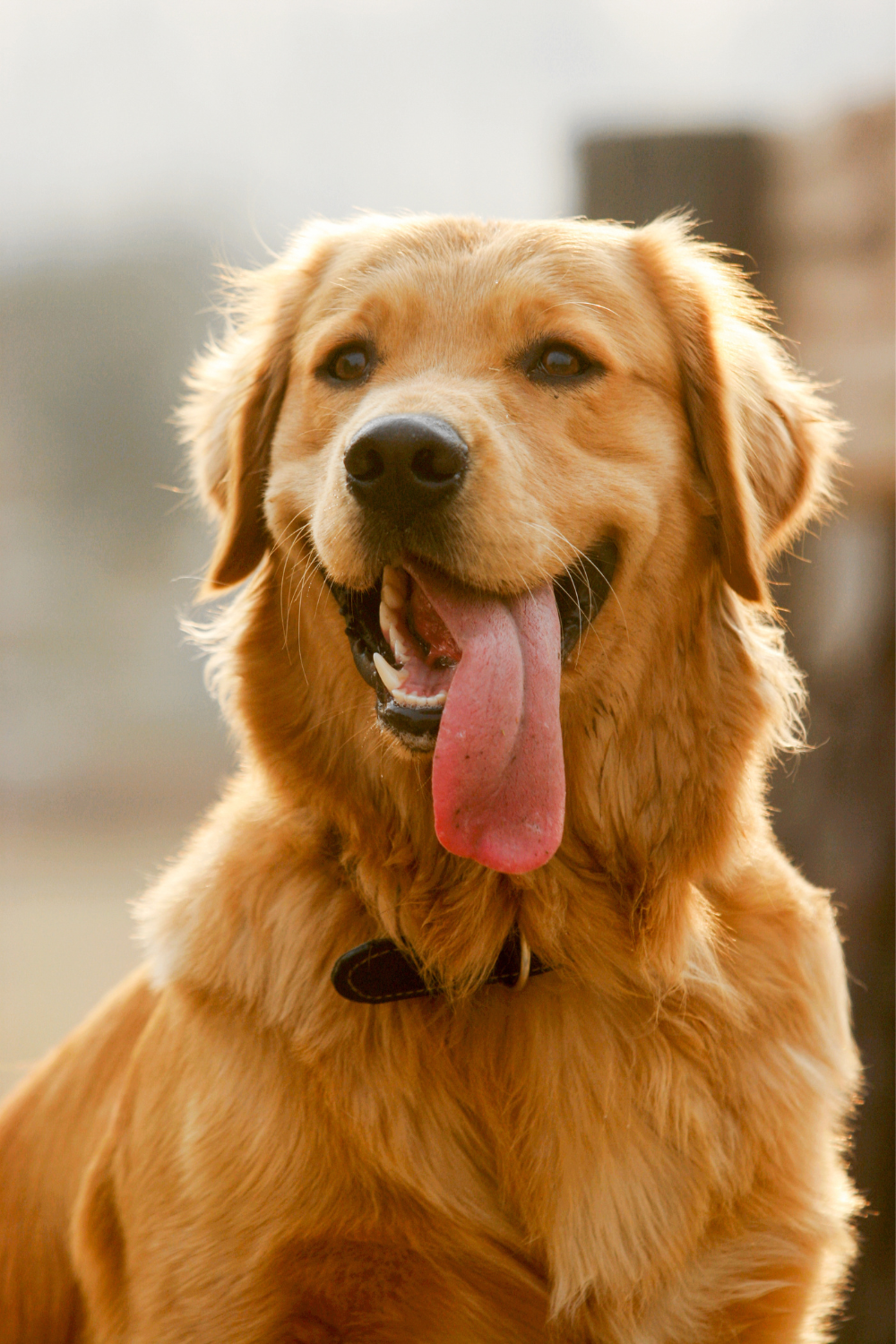Keeping your dog healthy is vital for their happiness and well-being. By focusing Signs of Health in Dogs on visible physical and behavioral signs, you can ensure your canine companion thrives. This guide explores how to assess your dog’s health, covering everything from their eyes to their diet, behavior, and overall mood.
Table of Contents
- Introduction to Canine Health
- Healthy Eyes in Dogs
- Coat and Skin as Indicators of Health
- The Role of Diet
- Signs of Digestive Health (Including Diarrhea)
- Weight and Muscle Tone
- Behavioral Signs of Health and Happiness
- Exercise and Activity Levels
- Reproductive Health in Dogs
- Routine Veterinary Care
- Frequently Asked Questions (FAQs)

1. Introduction to Canine Health
Understanding your dog’s health starts with observation.
Dogs can’t tell us when they’re unwell, but their bodies and behavior provide clear signs.
By focusing on certain aspects like their eyes, coat, digestion, and actions, you can monitor their physical and emotional well-being.
Healthy dogs exhibit:
- Bright, clear eyes.
- Shiny, non-irritated coats.
- Normal, regular bowel movements.
- High energy and enthusiasm for activities.
- Consistent appetite and proper hydration.
Early awareness of health signs allows for timely interventions, helping address any potential issues before they become severe.
Taking charge of your dog’s health requires being proactive, attentive, and informed.
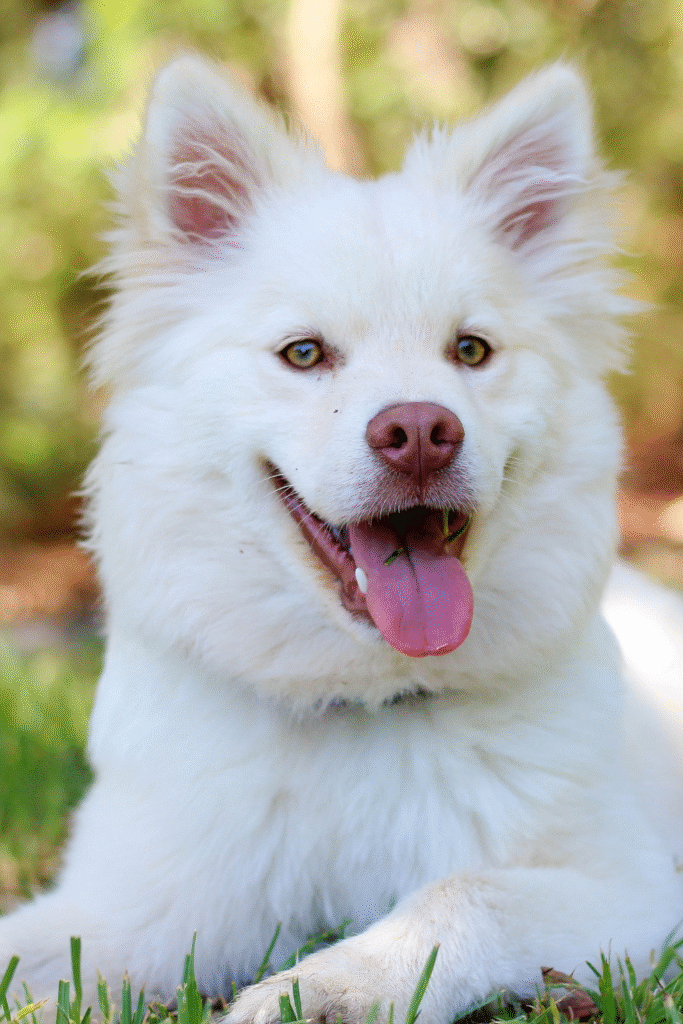
2. Healthy Eyes in Dogs
Healthy eyes are a key indicator of your dog’s overall well-being.
Look for eyes that are bright, clear, and free of any redness or discharge.
Regularly check for signs of irritation, cloudiness, or unusual tearing, as these could indicate underlying health concerns.
If you notice persistent issues, consult your veterinarian promptly for professional advice.
Key Indicators:
- Eyes are not just the windows to the soul; they’re also windows to a dog’s health. Here’s how to tell if your dog’s eyes are in great shape:
- Clarity: Healthy eyes are bright, clear, and shiny.
- No Discharge: While minor tearing may occur, excessive discharge, crust, or yellow-green mucus signals potential infections or allergies.
- Whites of the Eyes: The sclera (white part) should be free of redness or yellowing.
- Responsiveness to Light: Pupils should constrict when exposed to light and dilate in darkness.
- No Swelling or Redness: Swollen eyelids, redness, or obvious discomfort warrant a vet visit.
- Smooth Movement: Watch for steady, unrestricted eye movements.
Quick Table:
| Healthy Eyes | Unhealthy Eyes |
|---|---|
| Bright & clear | Cloudy or dull |
| Minimal discharge | Green/yellow discharge |
| Proper responsiveness | No reaction to light |
Regularly checking your dog’s eyes is essential. If something seems off, consult your vet swiftly. Factors like age or breed predispositions also play a role in ocular health.
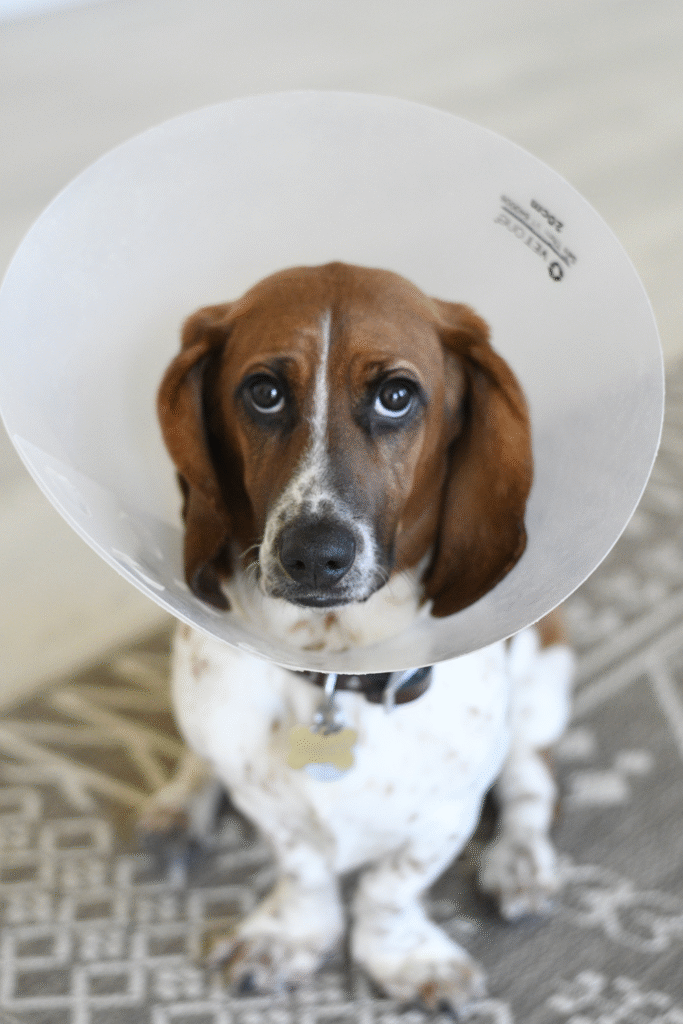
3. Coat and Skin as Indicators of Health
Your dog’s coat and skin are more than just a reflection of their appearance; they are vital indicators of overall health.
A shiny, well-maintained coat and healthy skin often signify proper nutrition and care.
By paying attention to changes in these areas, you can quickly spot potential health issues before they escalate.
The condition of your dog’s skin and coat speaks volumes about their internal health. A healthy coat is:
- Shiny and Smooth: Even short-haired dogs should have soft, lustrous fur.
- Free of Bald Spots: Patchy fur or excessive shedding can point to underlying issues, such as allergies or stress.
- Moisturized Skin: Dry, flaky skin may indicate dehydration or poor diet.
- Free of Parasites: Check regularly for fleas, ticks, or mites.
To maintain their coat:
- Brush regularly to remove dead fur and promote circulation.
- Feed a balanced diet rich in omega-3 fatty acids.
- Ensure your dog is properly hydrated.
By caring for their coat, you’re not just keeping them looking great; you’re addressing their overall health.

4. The Role of Diet
Your dog’s diet is the foundation of their health. Feeding them high-quality, age-appropriate food can prevent numerous health issues. Look out for:
- Steady Appetite: A sudden drop in appetite could signal issues.
- Hydration: A healthy dog drinks an appropriate amount of water daily.
- Healthy Weight: Overfeeding or underfeeding can lead to problems like obesity or malnutrition.
Consider these tips:
- Include protein, fats, and carbohydrates in meals.
- Offer occasional fresh fruits and vegetables as treats.
- Avoid toxic foods like chocolate, onions, and grapes.
If digestion is smooth and stools are formed (more on that next), your dog’s diet is on the right track.
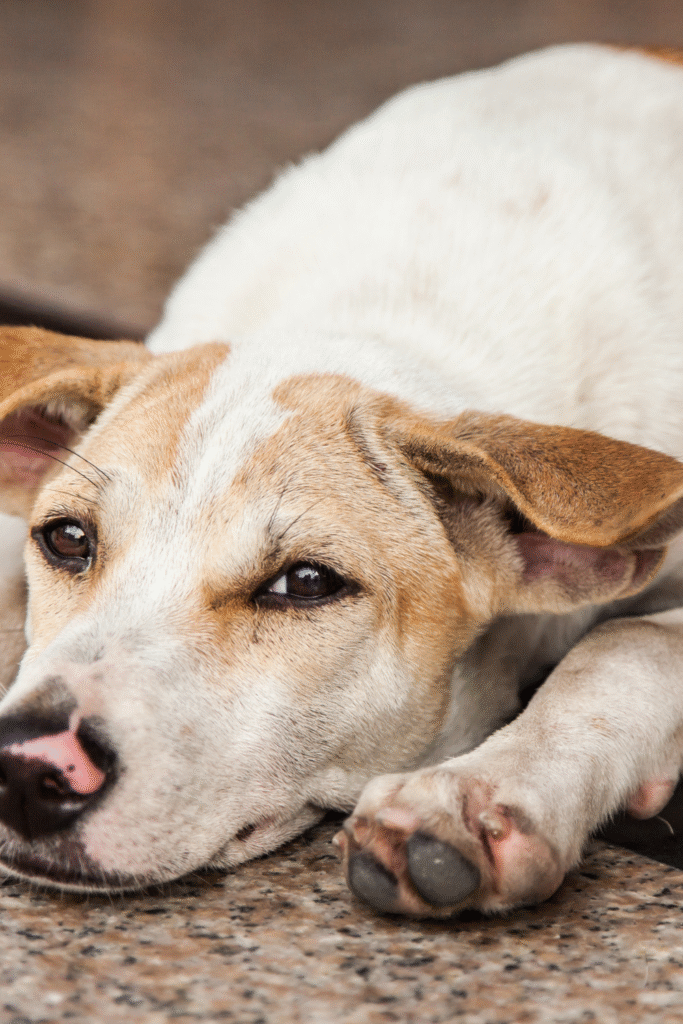
5. Signs of Digestive Health (Including Diarrhea)
Digestive health is one of the clearest indicators of overall well-being. While the occasional digestive upset isn’t unusual, persistent problems are a red flag.
What to Watch For:
- Well-Formed Stools: Healthy stools are firm and easy to pick up.
- No Chronic Diarrhea: Occasional loose stools could occur due to dietary changes, but frequent diarrhea requires attention.
- Regular Bowel Movements: Your dog should have consistent elimination habits.
Table:
| Signs of Digestive Health | Signs of Issues |
|---|---|
| Solid, firm stools | Persistent diarrhea |
| Regular schedules | Irregular bathroom habits |
| Odorless normal gas | Excessive flatulence |
Provide clean water and maintain a regular diet to support smooth digestion.
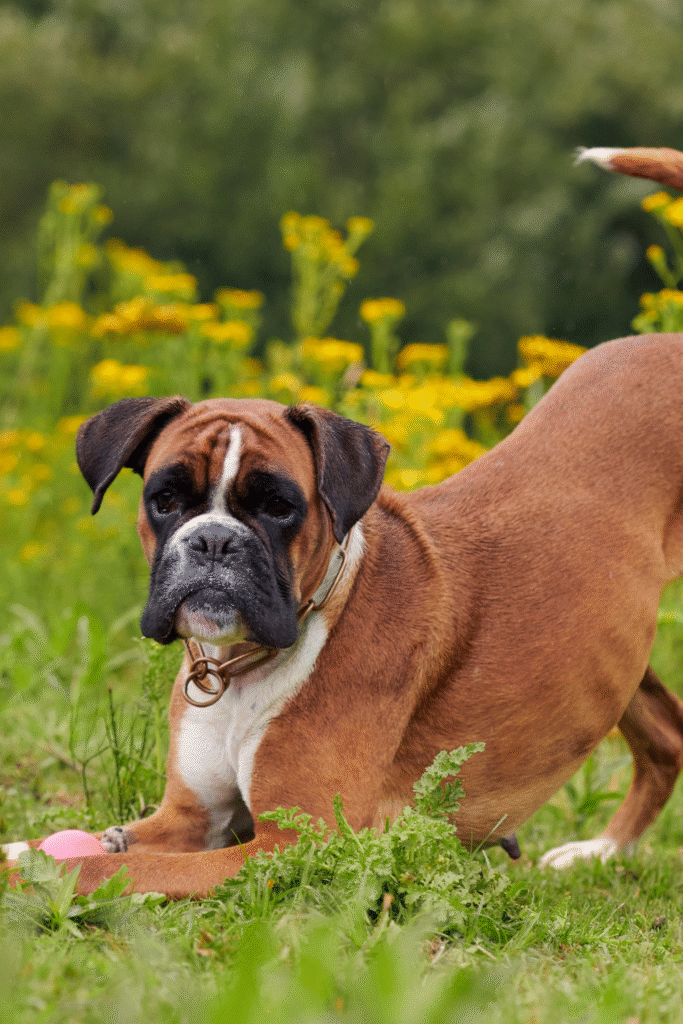
6. Weight and Muscle Tone
Maintaining your dog’s weight and muscle tone is crucial for their overall health and well-being.
A healthy dog should have a visible waistline when viewed from above and a tucked-up belly when seen from the side.
Running your hands along their ribs should allow you to feel them easily without excessive fat covering.
Regular exercise, such as walks, playtime, or structured activities like agility training, helps support strong muscles and a balanced weight.
Additionally, providing a high-quality, nutrient-rich diet appropriate for your dog’s age, breed, and activity level ensures they receive the necessary nutrients to thrive.
Be mindful of any sudden changes in weight or muscle tone, as these could indicate underlying health issues that require veterinary attention.
Dogs in good health maintain an ideal weight for their size and breed. You should:
- Be able to feel their ribs without excessive fat.
- See a noticeable waist when viewed from above.
- Note muscle tone, especially in active breeds.
Obesity is increasingly common in dogs, leading to heart, joint, and metabolic problems. Speak to your vet if you’re unsure about your dog’s ideal weight.

7. Behavioral Signs of Health and Happiness
- A happy and healthy dog often displays a relaxed body posture, with a wagging tail and soft, open eyes.
- Regular playfulness and excitement, such as greeting you enthusiastically or engaging in games, are signs of good mental and physical health.
- Healthy dogs typically eat and drink regularly, showing no signs of anxiety or food aggression during mealtime.
- They enjoy social interactions with both humans and other animals while maintaining appropriate boundaries.
- Normal vocalizations, such as barking or whining, are present without becoming excessive or indicating distress.
- A well-balanced dog sleeps deeply and comfortably but remains alert and engaged when awake.
- Curiosity about their surroundings and a willingness to explore indicate a positive and stimulated temperament.
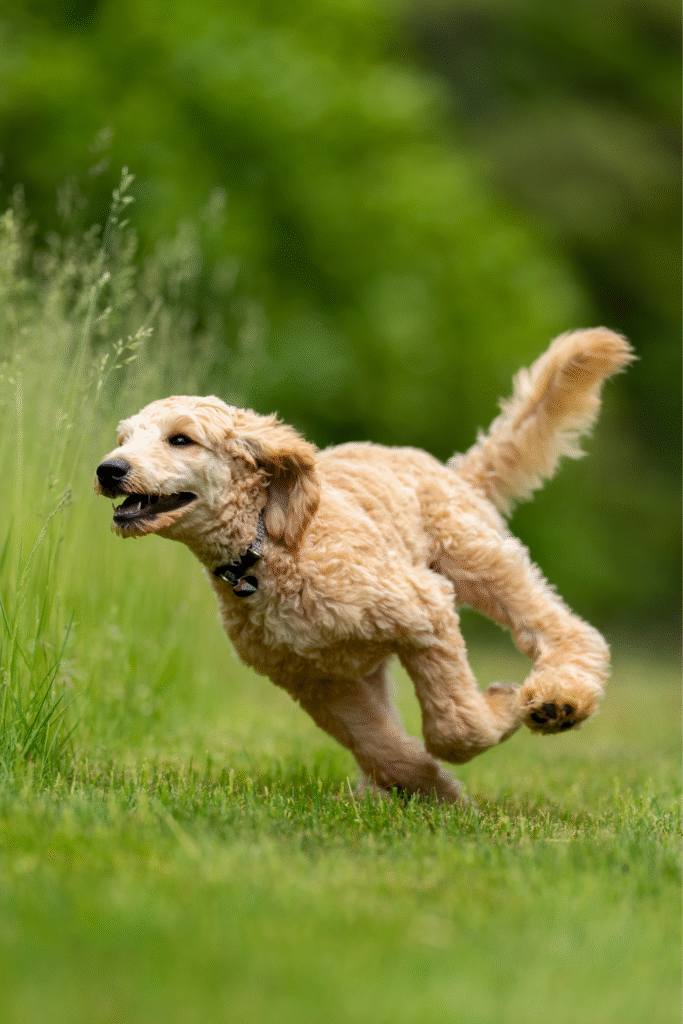
8. Exercise and Activity Levels
Regular exercise and appropriate activity levels are essential for maintaining both the physical and mental health of a well-balanced dog.
Daily physical activity helps to prevent obesity, improve cardiovascular health, and strengthen muscles and joints.
It also provides mental stimulation, which can reduce boredom and undesirable behaviors, such as chewing or excessive barking.
The ideal amount and type of exercise depend on the dog’s breed, age, and individual energy levels.
High-energy breeds may require activities like running, hiking, or agility training to meet their needs, while lower-energy breeds may thrive with shorter walks and gentle play sessions.
Engaging your dog in interactive games, such as fetch or puzzle toys, is a great way to combine physical activity with mental enrichment. Remember to monitor your dog’s behavior and adjust their routine to ensure they remain happy, healthy, and active.
| Activity | Description | Suitable For |
|---|---|---|
| Walking | A basic activity that provides exercise and outdoor exploration. | All breeds and energy levels |
| Fetch | A game involving throwing and retrieving objects like balls or toys. | High-energy and playful breeds |
| Hiking | Long-distance walking on trails or uneven terrain. | Active and high-energy breeds |
| Puzzle Toys | Toys designed to challenge a dog’s intelligence and focus. | All breeds, particularly curious ones |
| Agility Training | Structured training using obstacles like jumps and tunnels. | High-energy and athletic breeds |
| Short Play Sessions | Gentle indoor or outdoor play activity. | Low-energy or senior dogs |
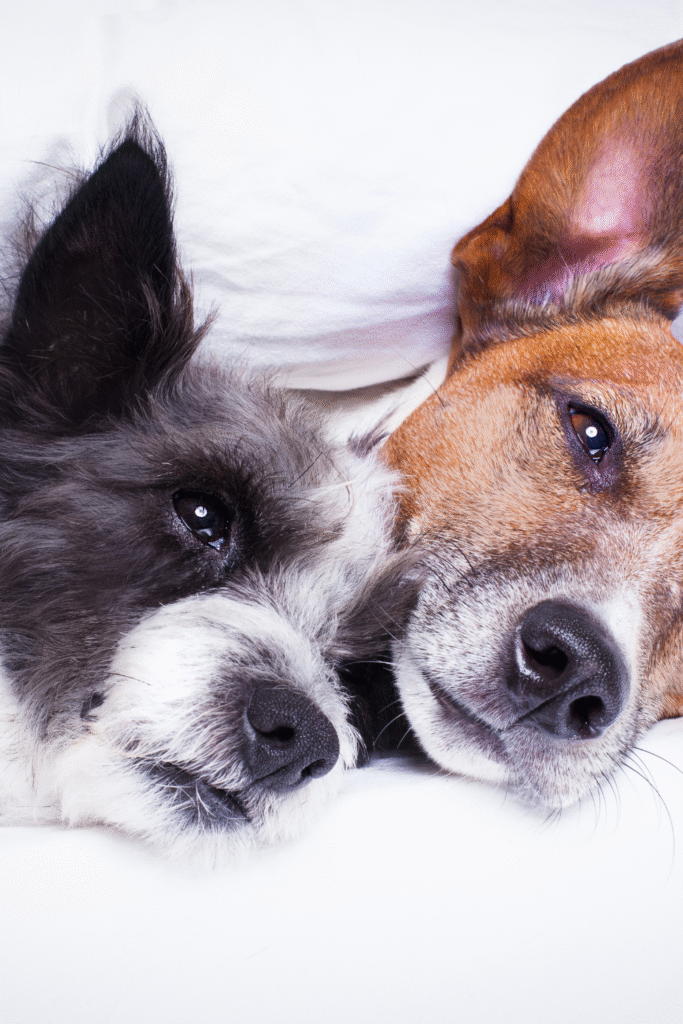
9. Reproductive Health in Dogs
Maintaining the reproductive health of dogs is vital for their overall well-being and long-term quality of life. Below are some key points regarding reproductive health in dogs:
- Spaying and Neutering: Spaying (for females) and neutering (for males) help prevent unwanted litters, reduce the risk of certain cancers, and may alleviate behavioral issues.
- Regular Veterinary Check-ups: Routine examinations can help identify reproductive health concerns such as infections, prostate issues, or ovarian cysts early on.
- Signs of Heat in Females: Female dogs typically go into heat twice a year. Recognizing signs like swelling, behavioral changes, or discharge is essential for proper care and management.
- Pregnancy Care: If breeding is planned, ensure the female is in good health and provide prenatal care through veterinary guidance, balanced nutrition, and a safe environment.
- Common Reproductive Issues: Be vigilant for conditions like pyometra (a uterine infection), testicular tumors, or hormonal imbalances, as they can lead to severe health problems if untreated.
- Breeding Ethics: Responsible breeding involves health testing and ensuring that both the male and female dogs are free of genetic issues or hereditary conditions.
- Postpartum Care: After giving birth, monitor the mother and puppies for any signs of distress, infections, or difficulty nursing, and consult a veterinarian if concerns arise.
Proper attention to reproductive health helps prevent complications and ensures that dogs lead active, healthy lives.
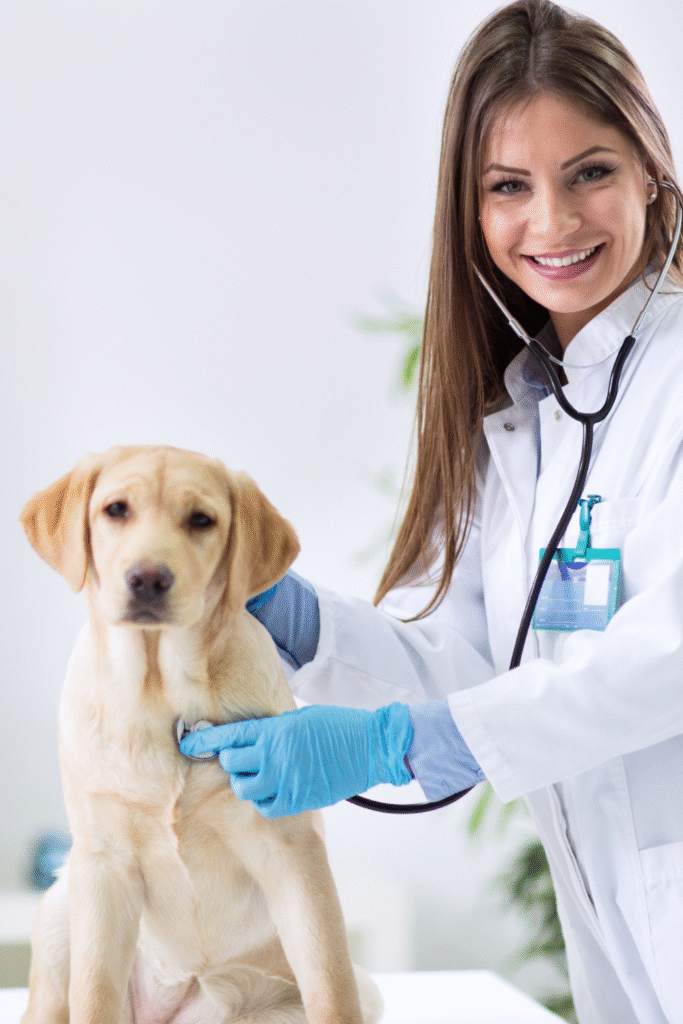
10. Routine Veterinary Care
- Regular Check-ups: Schedule annual or bi-annual visits to the veterinarian to monitor your dog’s overall health and address any potential health issues early.
- Vaccinations: Ensure your dog receives core and non-core vaccines as recommended by your veterinarian to prevent life-threatening diseases.
- Parasite Control: Regularly administer flea, tick, and heartworm preventatives to protect your dog from common parasites.
- Dental Care: Have your dog’s teeth examined and cleaned periodically to prevent dental diseases like tartar buildup and gingivitis.
- Weight Management: Regular weigh-ins during veterinary visits can help monitor your dog’s weight and prevent obesity-related health issues.
- Blood Work and Screenings: Conduct routine blood tests and screenings, especially for older dogs, to identify any underlying conditions early.
- Behavioral Evaluation: Discuss any behavioral changes with your veterinarian, as they can indicate health or emotional issues that may require attention.

Frequently Asked Questions (FAQs)
- How often should I take my dog to the veterinarian for a check-up?
It is recommended to take your dog for a check-up at least once a year, though senior dogs or those with health issues may require more frequent visits.
- What vaccinations does my dog need?
Your dog needs core vaccinations like rabies, distemper, parvovirus, and adenovirus. Non-core vaccines may be recommended based on lifestyle and exposure risks.
- How can I tell if my dog is overweight?
An overweight dog often has difficulty feeling ribs under the skin, lacks a visible waist, and may display reduced energy. Your veterinarian can confirm with a weight assessment.
- What dental care practices are best for my dog?
Daily brushing with dog-safe toothpaste, dental chews, and professional cleanings are essential for maintaining your dog’s oral health.
- How do I know if my dog is in pain or uncomfortable?
Signs of pain include reluctance to play or move, limping, excessive panting, whining, or behavioral changes such as aggression or withdrawal. Always consult a veterinarian if you notice these symptoms.
- What should I feed my dog for optimal health?
A balanced diet with high-quality dog food appropriate for your dog’s age, size, and activity level is ideal. Your veterinarian can provide specific nutrition recommendations.
- How much exercise does my dog need?
Exercise needs vary by breed, age, and health. Most dogs benefit from daily walks and time to play, typically requiring between 30 minutes to 2 hours of activity.
- What are common signs of illness in dogs?
Symptoms like vomiting, diarrhea, lack of appetite, coughing, excessive drinking, or changes in behavior can indicate illness and should be assessed by a veterinarian.
- How do I handle flea and tick prevention?
There are various options like topical treatments, collars, and oral medications. Consult your veterinarian to choose an effective product suitable for your dog’s needs.
- At what age is my dog considered a senior?
Dogs are typically considered seniors around 7 years of age, though smaller breeds may age more slowly. Regular health check-ups become increasingly important as your dog ages.
Summary
Caring for a dog requires attention to various aspects of their health and well-being, including recognizing symptoms of illness, managing flea and tick prevention, and understanding the aging process. Regular consultation with a veterinarian ensures your dog receives appropriate care throughout their life stages, particularly as they transition into their senior years.
